A podcast website is a critical part of your brand. Every successful show has one. If you want your audience to take you seriously, you’ll need one as well. Fortunately, you don’t need a developer or a big budget to create your own podcast website.
In this article, we’ll explain why you need your own site, take a look at some of the best podcast website examples, and then show you how to create your own. No technical skills required!
Action
Need a professional podcast website? Castos provides customizable websites with built-in SEO optimization, automatic episode updates, and integrated monetization tools all in one platform. Start your 14-day free trial
Why is a Podcast Website Important?
You see – Submitting your podcast to podcast directories like Apple Podcasts, Google Play, and Spotify is a key way to grow your following. That’s where many people will discover your show. It’s also where they’ll subscribe, and come back to listen to new episodes.
So it might seem that you don’t really need anything besides a presence on those platforms. Sorry, that’s not the case! You definitely need a podcast website.
It’s the Home Base of Your Show
Action
Read to start your own podcast? Learn the nitty-gritty details of starting your own show in our comprehensive guide. Learn how to start your next podcast today.
Repeat after me: Apple Podcasts or Spotify is not the home of my podcast.
Whenever you have a call to action, or CTA, in your podcast episodes, it should always direct people back to your podcast website, not places like YouTube, Apple, or Spotify.
Let’s face it, times change. Platforms that are popular now will go out of vogue in a few years (MySpace, anyone?!), and building your podcasting empire in someone else’s sandbox is a risky move. Social media platforms close, rules change, and people find new ways to socialize.
Your podcast’s website (with its own custom domain), however, can never be taken away, no one can change the rules, or restrict what you can do.
Given this stability, it’s much better to spend extra time and effort building a platform where you can fully customize the contents, settings, and site behavior. You can use your site to show off your list of episodes (via your podcast feed), and also offer advanced features, like exclusive content, contact details, and access to premium content.
There’s SEO Value
Building content on your website over time tells Google—and other search engines—that your site is the place to learn about a particular topic. Adding lots of content to your site is key to ranking well. And when your site ranks well, potential listeners find it and become listeners.
In addition to adding every episode to your podcast’s website, you should also add transcriptions and show notes. These text-based elements make it easier for search engines to learn what the episode is about. When a user searches for a keyword related to your topic, that episode can then be served as a result to answer their question.
Complement Your Other Businesses
If you already have a website for your brand, business, or group, embedding your podcast onto that existing website is a no-brainer.
Not only will this streamline your publishing workflows because you won’t have to leave your content management platform, but it will also likely increase the time that visitors spend on your website if they’re able to check out not only your written content but your podcast as well.
It’s Customized to Your Brand
Even in an audio-first medium like podcasting, it never hurts to have a nice looking website for your listeners to visit. Something that is well designed, has a listener’s goals in mind, and makes sense for first-time visitors to navigate will instantly send trust signals to your audience.
They will feel that your site is a place of authority, that this is a place that they can rely on for high-quality content, and this will result in them subscribing to your podcast.
15 Podcast Website Examples
Before you build your own site, it helps to look at some podcast website examples from our favorite podcasts to get some inspiration.
1. NewsWorthy
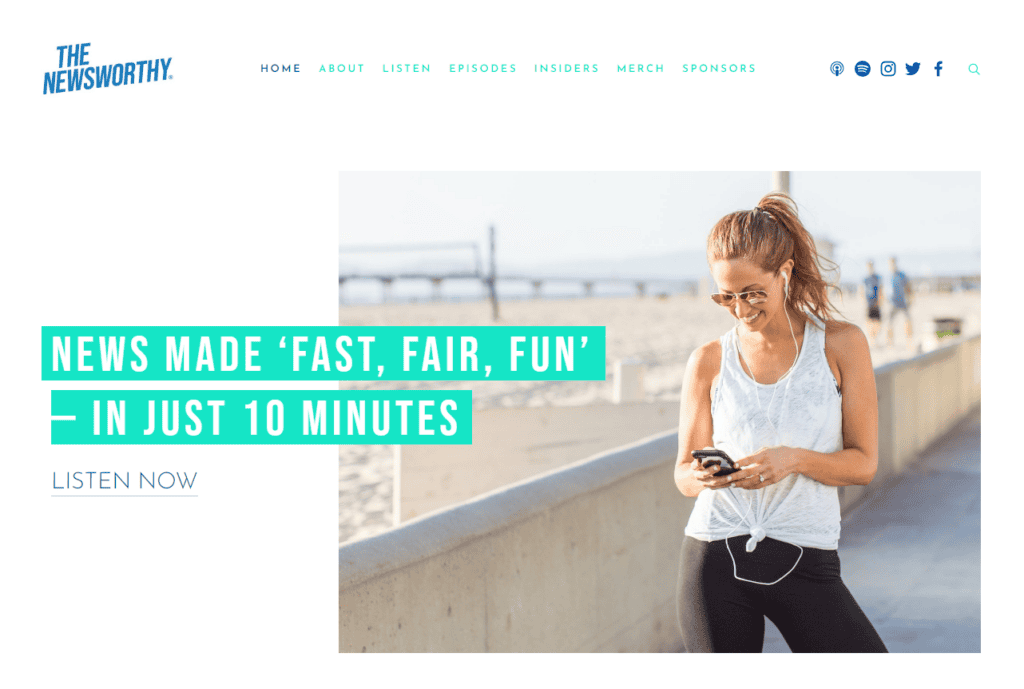
NewsWorthy nails that balance between simplicity and style. The site has a daily news feed feel with easy-to-skim episode titles. You can jump right into the latest headlines or sign up for quick email updates. It’s built for the fast-paced news listener.
2. This American Life
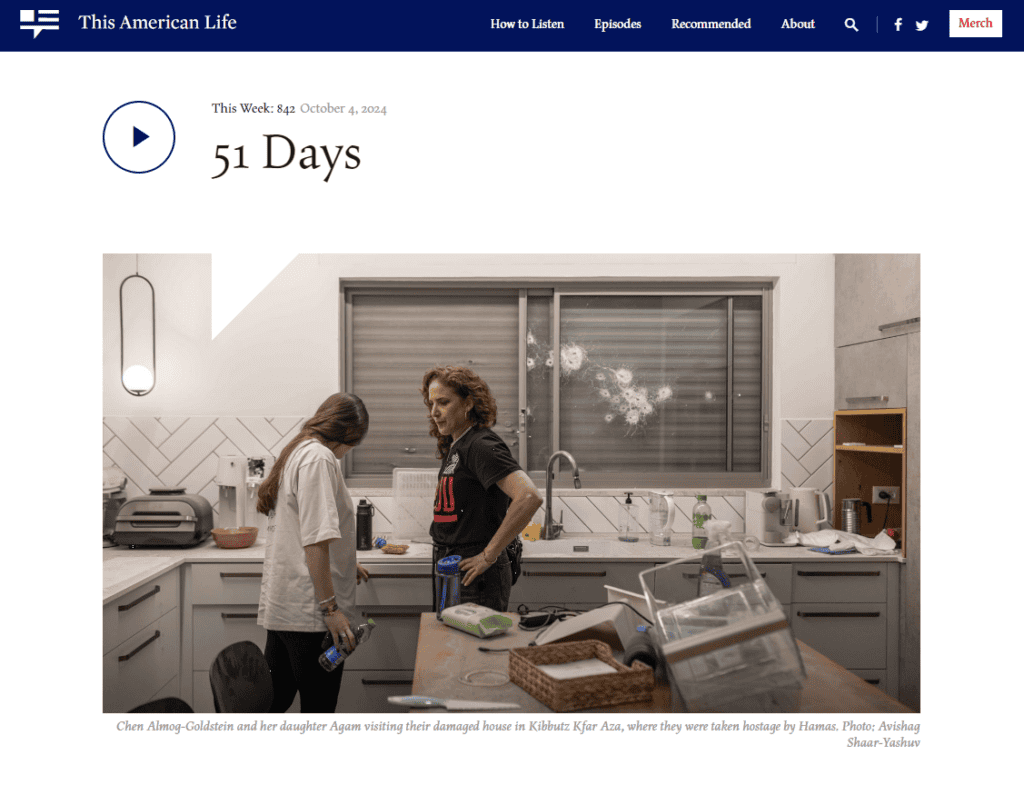
This American Life’s site is beautifully minimalist yet full of personality. The episodes are the star, with full descriptions that pull you in right away. It’s super easy to browse, search, and listen to one of the most iconic podcasts out there.
3. Side Hustle Pro
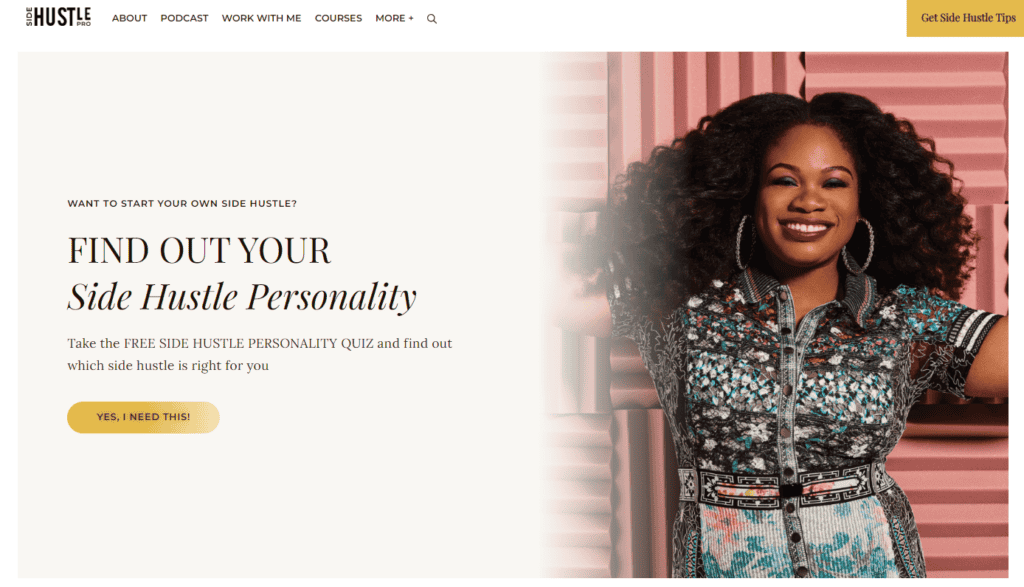
Side Hustle Pro’s website is all about action. It’s bold, energetic, and makes it clear that the show is for entrepreneurs. There are easy links to start listening or dive into resources, and the vibrant design matches the podcast’s empowering vibe.
4. Radiolab
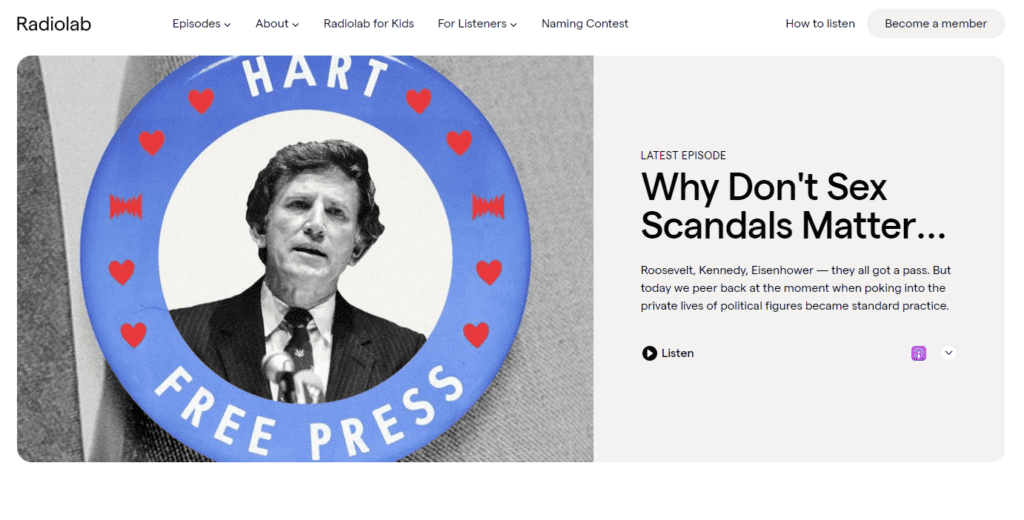
Radiolab’s site grabs your attention with striking visuals and deep storytelling. Every episode is easy to find and explore, with beautifully written summaries and a unique design that reflects the podcast’s curious, investigative nature.
5. Crime Junkie
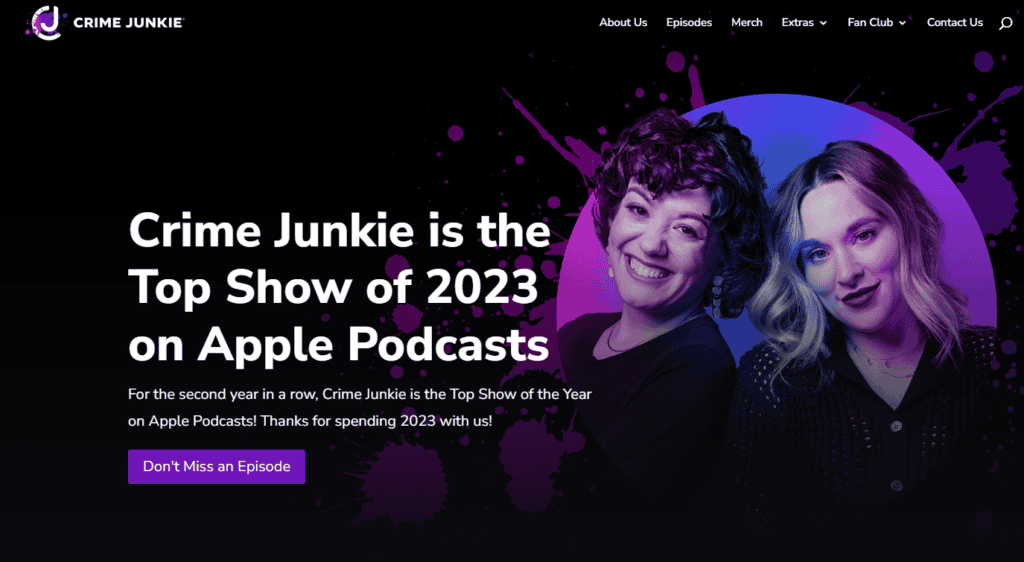
Crime Junkie’s website is a true crime fan’s dream. It’s clean, easy to navigate, and gets right to the point. Each episode is well-organized, and listeners can quickly dive into the latest mystery. Plus, the dark, moody design totally fits the crime vibe.
6. Twenty Thousand Hertz
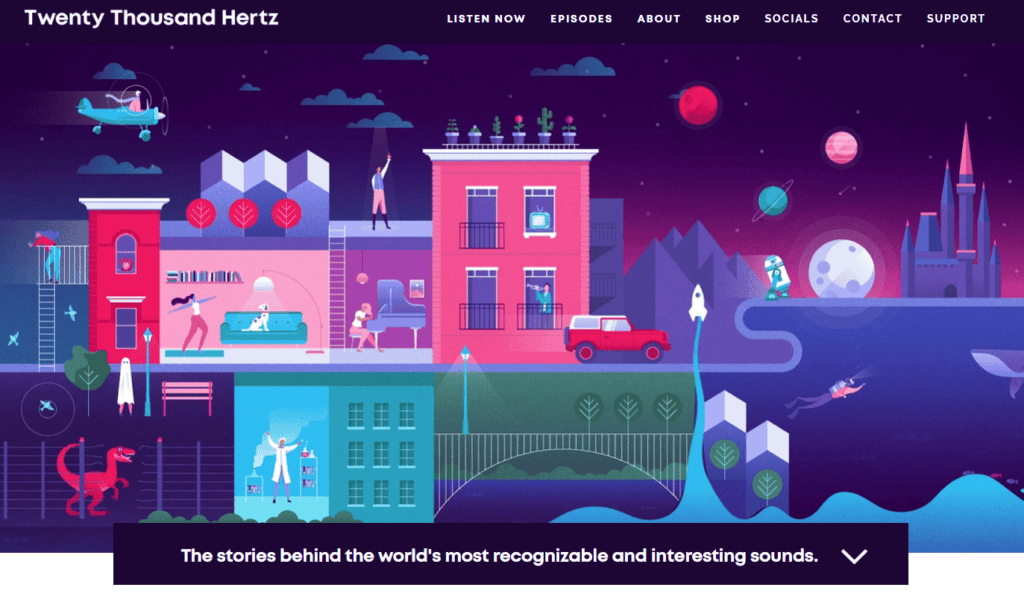
Twenty Thousand Hertz’s website is sleek and sounds-focused, just like the podcast. It’s visually captivating with a modern design that mirrors the show’s innovative storytelling. You can easily find episodes by category, making it perfect for curious audio enthusiasts.
7. Growth Marketer Podcast
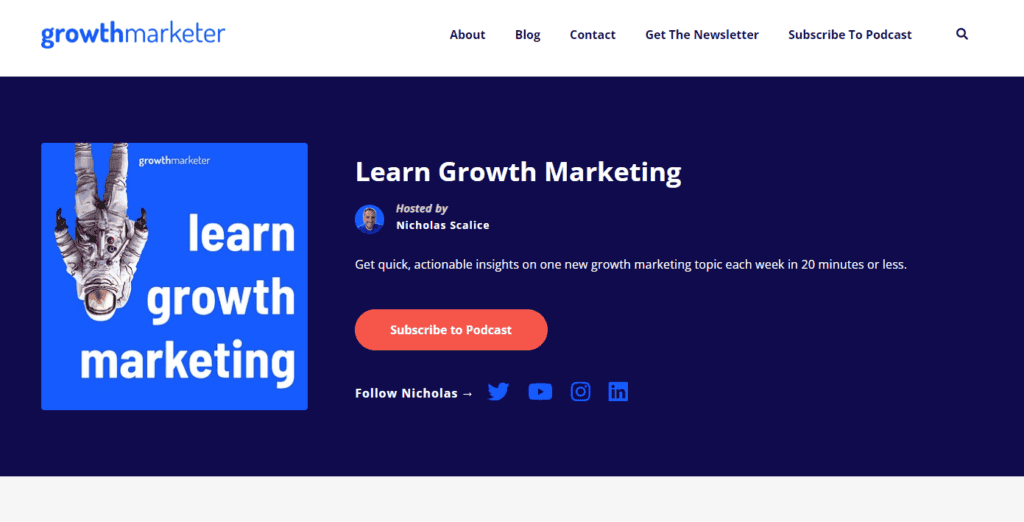
The Growth Marketer Podcast website is laser-focused, just like the audience it serves. It’s got a no-frills layout, with easy-to-read show notes and episode links that cater directly to marketers who want practical insights without the fluff.
8. 99% Invisible
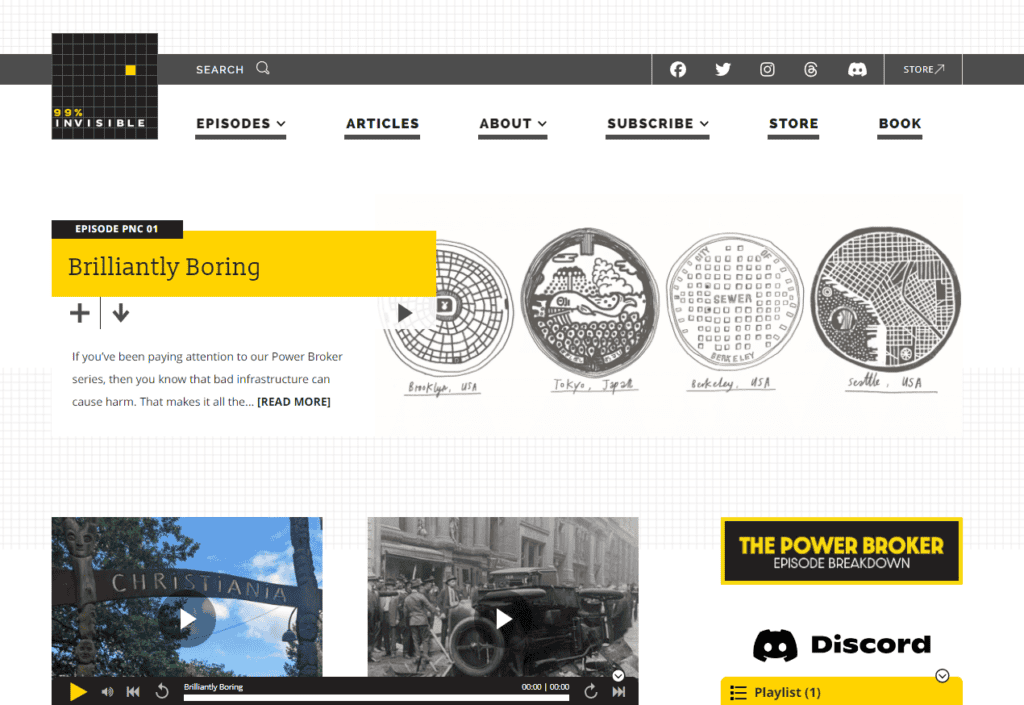
99% Invisible’s website is as creative as its content. The design is sleek, with a focus on visuals that highlight the unique stories behind each episode. You can scroll through easily, and every detail on the site feels intentional, just like the show’s episodes.
9. Construction Disruption
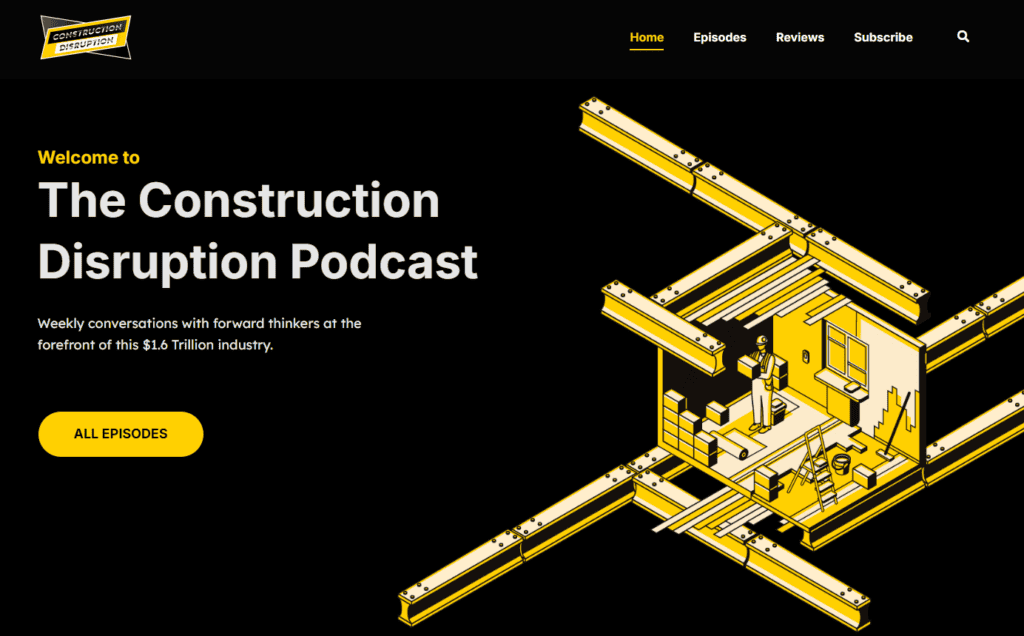
Construction Disruption’s website is perfectly tailored to its niche audience. It’s simple, with a professional layout and easy access to industry-specific episodes. The no-nonsense design makes it easy for construction pros to find the insights they need.
10. SleepWave

SleepWave’s website is calming, just like the podcast itself. With soft colors and soothing imagery, it invites visitors to relax and unwind. The simple navigation and quick access to sleep episodes make it a breeze for anyone looking to catch some zzz’s.
11. The Friday Habit
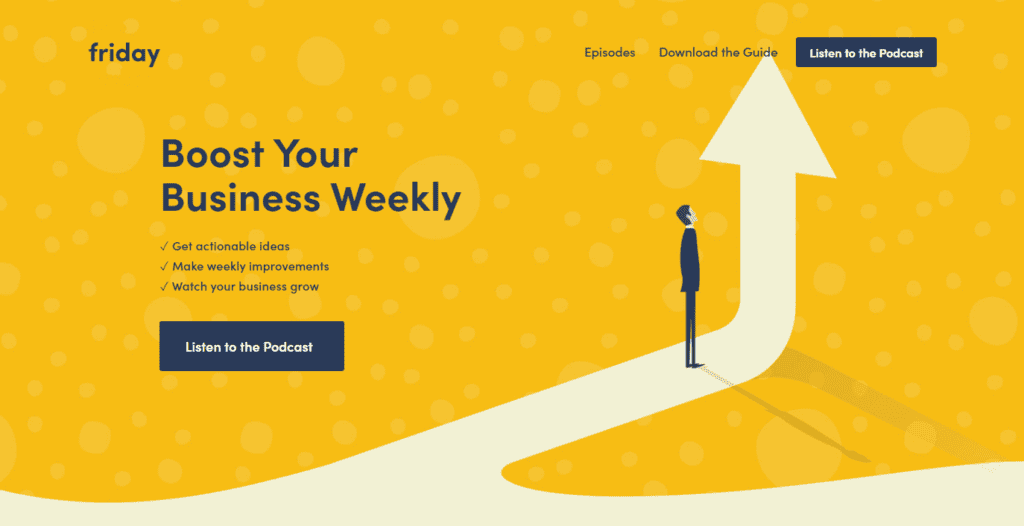
The Friday Habit’s website stands out for its clean design and user-friendly navigation, which draws visitors in without overwhelming them. The content is organized well, featuring clear episode descriptions, and it offers simple ways to subscribe and engage. The professional but relaxed feel matches the podcast’s tone.
12. WPMRR
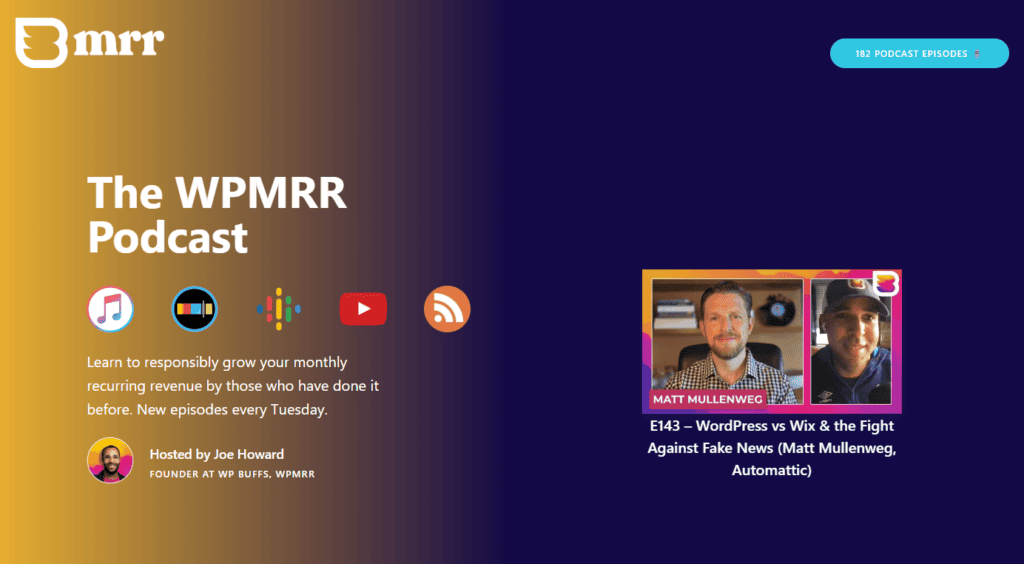
WPMRR’s website is a great fit for WordPress pros. It’s clear, clean, and packed with useful content. The episodes are easy to navigate, and there’s a ton of helpful info on optimizing revenue through WordPress management. It’s a straightforward, user-friendly experience and gets straight to value.
13. My Favorite Murder
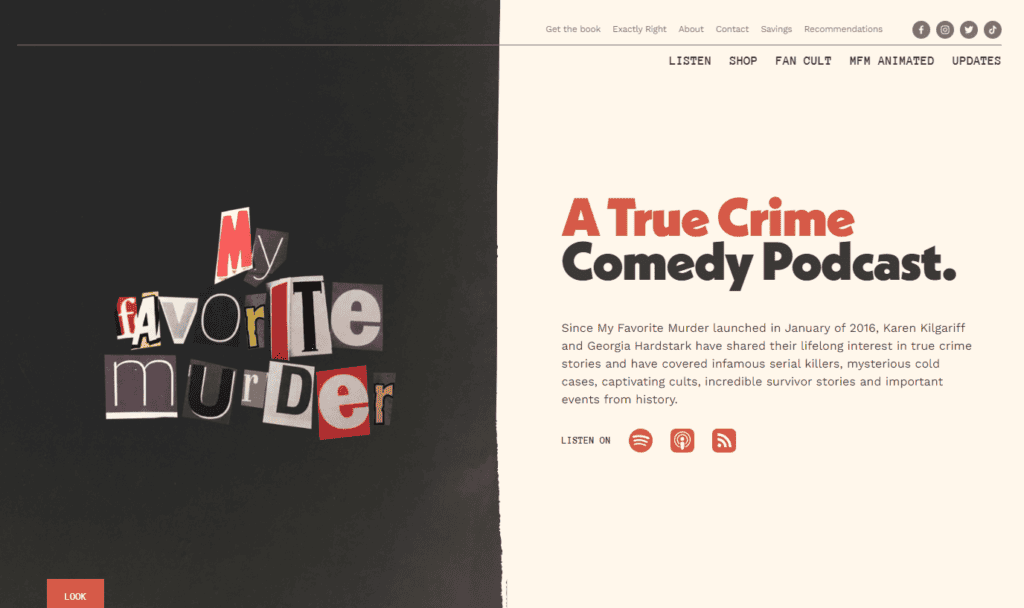
My Favorite Murder’s website perfectly captures the show’s quirky true crime vibe. It’s simple but loaded with personality, from the bold colors to the fun episode descriptions. The site makes it easy for die-hard fans to keep up with episodes and get the latest updates.
14. The Shine Online Podcast
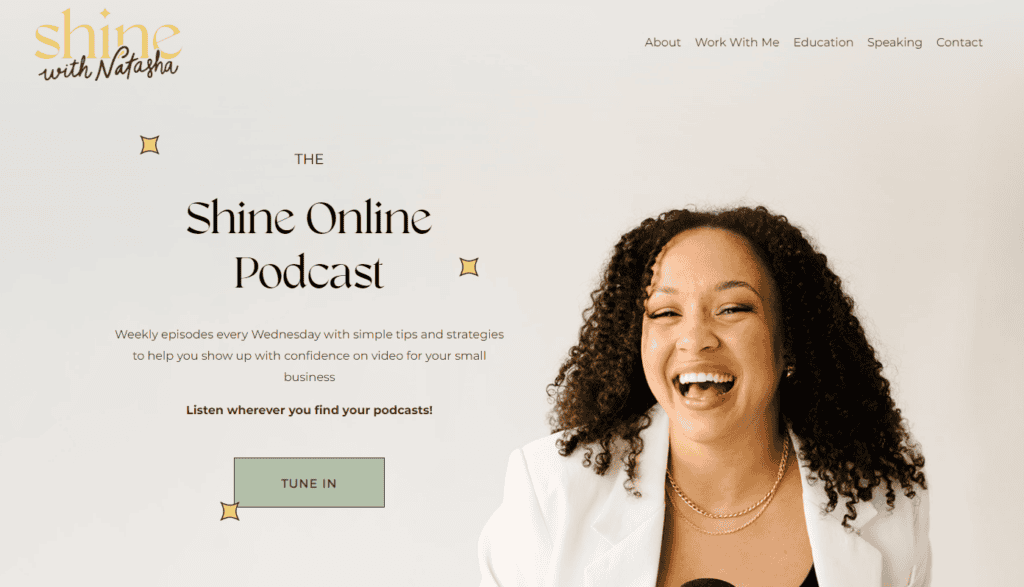
The Shine Online Podcast website feels bright, welcoming, and totally aligned with its focus on personal branding and social media. It’s super easy to navigate, and listeners can quickly find episodes that resonate with their journey. The cheerful, polished design matches the podcast’s upbeat tone.
15. Pushkin
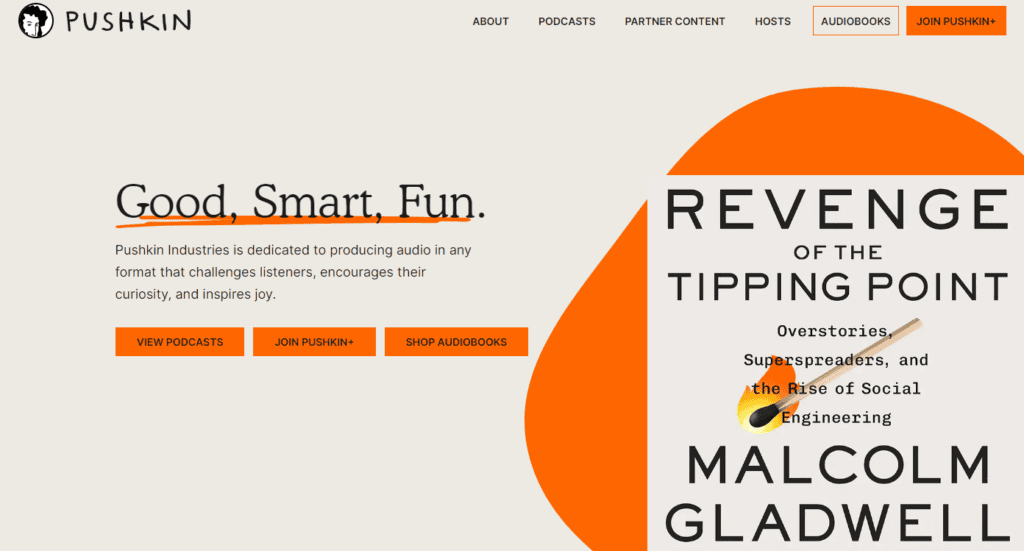
Pushkin’s website is all about storytelling. The design is sleek and professional, with each podcast having its own page, making it easy to find whatever show you’re into. Whether it’s history, culture, or interviews, the site makes diving into quality content a breeze.
How to Create a Podcast Website
Now that you understand what you need in a podcast website, let’s walk to the process of creating your own.
Step 1: Choose A Website Hosting Provider
Your first step is to open an account with a web hosting service. This is the company that will store your website files and make them available to everyone. You’ve probably heard of companies like Bluehost, SiteGround, or premium hosts like WPEngine, or Kinsta.
A web host is not the same as your podcast hosting platform (where you store your podcast audio files). You’ll need a separate podcast host for that as they’re optimized for audio files and download requests.
You’ll need a domain, as well. You can buy this at the same time you open your web hosting account. If you already purchased a domain from another vendor, follow your web host’s steps to transfer the domain to the hosting service.
If you want a super simple system, use a secure managed WordPress hosting provider. They’re a little more expensive than purchasing service from a traditional web host, but they handle everything regarding your website. Your site will run on the best technology and you’ll have plenty of support. At Castos, we use Kinsta and can’t recommend them enough.
Step 2: Install WordPress
There are many content management systems that work just fine, but we think WordPress is leagues above all the other options.
WordPress is a flexible tool that lets you build complete websites without any technical knowledge. It began as a blogging tool, but it’s become much more. It’s open-source, which means it’s absolutely free, plus you can expand its functionality with unique themes and plugins.
Most web hosts have a one-click WordPress installation button. This is the easiest way to install WordPress. For example, hosts like WPEngine just need a title for your site, and they’ll automate the entire process.
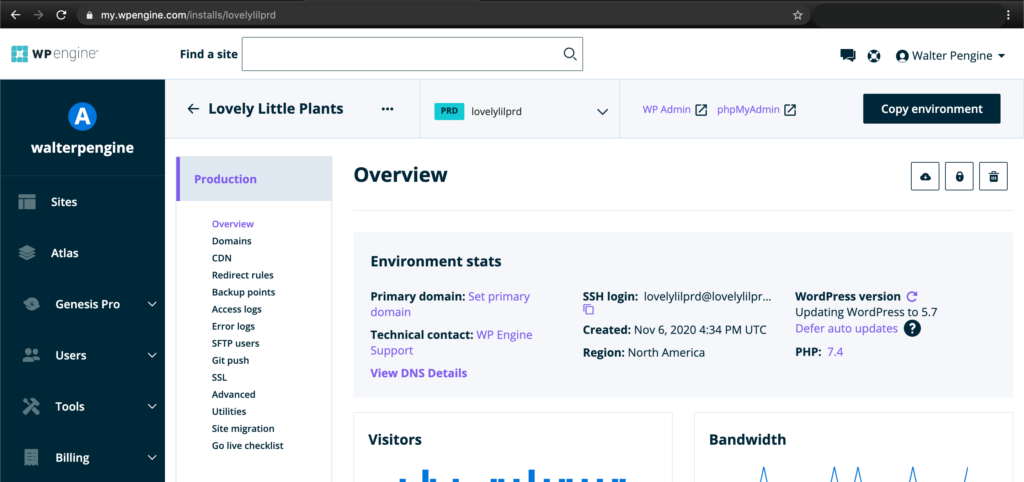
If your web host doesn’t have a one-click installation button, you can install WordPress manually in just a few moments. All you have to do is download the WordPress package, upload it to the right place on your web host, and follow the setup steps.
Learn more about how to install WordPress at their full installation guide.
Step 3: Install a WordPress Theme
A theme is a collection of template files that give your website an atheistically pleasing look. WordPress comes with a few default options but they aren’t very attractive, so you’ll want to find a podcast website template that fits your brand and needs.
It’s possible to use any theme you like, but we recommend picking one that’s made specifically for podcasting. Check out our guide for details on what to look for in a podcast specific WordPress themes along with a few recommendations.
You can also browse around for your own theme–there are plenty of free options that will work fine, but spending $50-$100 on a premium package will give you an edge.
Once you’ve chosen a theme, you’ll need to install it. You’ll do this under Appearances > Themes in your WordPress dashboard. Click Add New, then Upload Theme, and find the theme files of your computer.
For a complete walkthrough on installing a WordPress theme, checkout WPBeginner’s full guide.
Step 4: Install WordPress Plugins
Plugins are tools that extend the functionality of your website. You can do some incredible things on your website with the right combination of plugins and many are totally free.
Just like your theme, plugins are easy to install. You can upload them directly through your WordPress dashboard with just a few clicks. WP Beginner has a great tutorial video.
Which plugins should you install? That depends on what you need your website to do, but we can make some recommendations.
For starters, you’ll definitely need a podcasting plugin. We recommend our own plugin, Seriously Simple Podcasting. It’s a free plugin that lets you upload your audio files directly on your WordPress dashboard, saving you time and the hassle of toggling between multiple platforms. It comes with an audio player, integrated statistics, a convenient workflow, SEO management, and several add-ons.
Here’s how it works:
Here are some other WordPress plugins every podcast website should install:
- Yoast SEO – To help you optimize your pages for search.
- Jetpack – Includes a huge selection of robust features, like sharing tools, security defenses, search engine optimizations, and monitoring.
- Akismet – To reduce spam comments. This comes with WordPress, so don’t delete it.
- W3 Total Cache – To improve site performance.
- BackWPup – To back up your website files in case something bad happens.
- Elementor (or similar podcast website builder) – To build attractive pages without code.
Additionally, you’ll need a plugin that integrates your podcast website with your email marketing tool. For instance, you might use MailChimp for WordPress, Constant Contact Forms, or Aweber Web Form.
Step 5: Customize Your Podcast Website
You can find plenty of information on the web about customizing WordPress. Every theme is different, as well, so make sure you browse through your theme options to play around with colors, fonts, layouts, etc. Nevertheless, here are some tips to help you design the best podcast website possible.
Create the Essential Pages
Every podcast website needs a few essential pages. You’ll need an About page (or “About the Show”) that describes your podcast, what you talk about, and who you publish your show for.
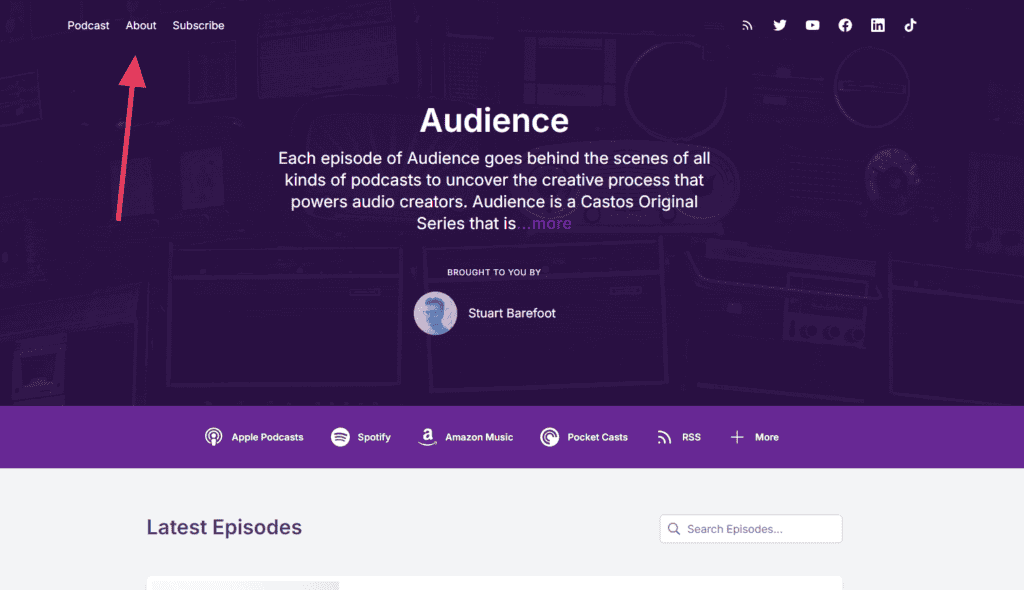
You’ll also need a Contact page that lists all the ways people can get in touch with you. Include an email address, social media links, and a form for easy submitting.
Make sure one page is designated as a blog. These blog posts are where WordPress will display a list of your latest Posts in chronological order starting with the most recent.
It’s smart to create a new Post right away so there’s something on your website, even if you don’t have a podcast episode to embed on the page. Write something about your upcoming show and why people should listen.
Configure Your Lead Capture Tool
Building an email list of a critical part of marketing your show so you can notify followers whenever a new episode is published.
To grow your list, use a lead capture tool like OptinMonster and place opt-in forms throughout your podcast website allowing visitors to submit their email addresses. Places like the sidebar, footer, or the bottom of each podcast post are great places to start.
And don’t forget to integrate your lead generation tool with your email service provider so you can store the collected addresses in one place.
Step 6: Create a Post for Your First Episode
Create a new post each time you publish an episode to generate a unique page. This is where you’ll embed your audio player on top of your new post, add additional content, like your show notes, and paste in your episode transcript.
If you installed an SEO plugin like Yoast SEO, don’t forget to go through its steps to optimize your page for search. This can go a long way toward attracting new listeners.
Action
If you use Seriously Simple Podcasting, you can generate a new page simply by clicking Podcasts > Add New on the left menu. You’ll have the typical WordPress options as well as a menu to upload a new audio file.
Using Castos to Create a Customizable Podcast Website
If you’re not interested in building your own podcast website, there is another way. You’ll still reap many of the same benefits without any website building required.
All Castos customers, regardless of the plan, receive access to a customizable podcast website with all the key features you need. It tells listeners everything they need to know about the show, shows off your cover art, creates a new page for each episode, and offers links to the popular podcast apps.
As an example, check out the customizable website for one our podcasts: Audience.
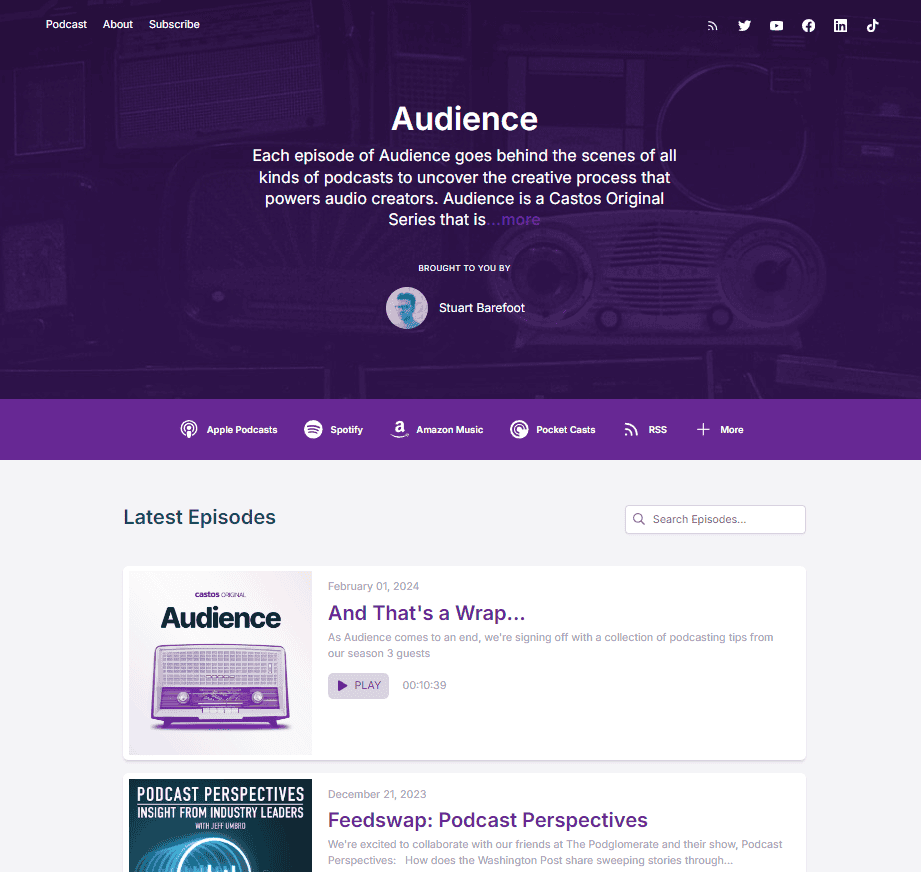
This site doesn’t require any coding knowledge so it’s especially useful for beginners. You can update the colors and links to match your brand all from the Castos dashboard.
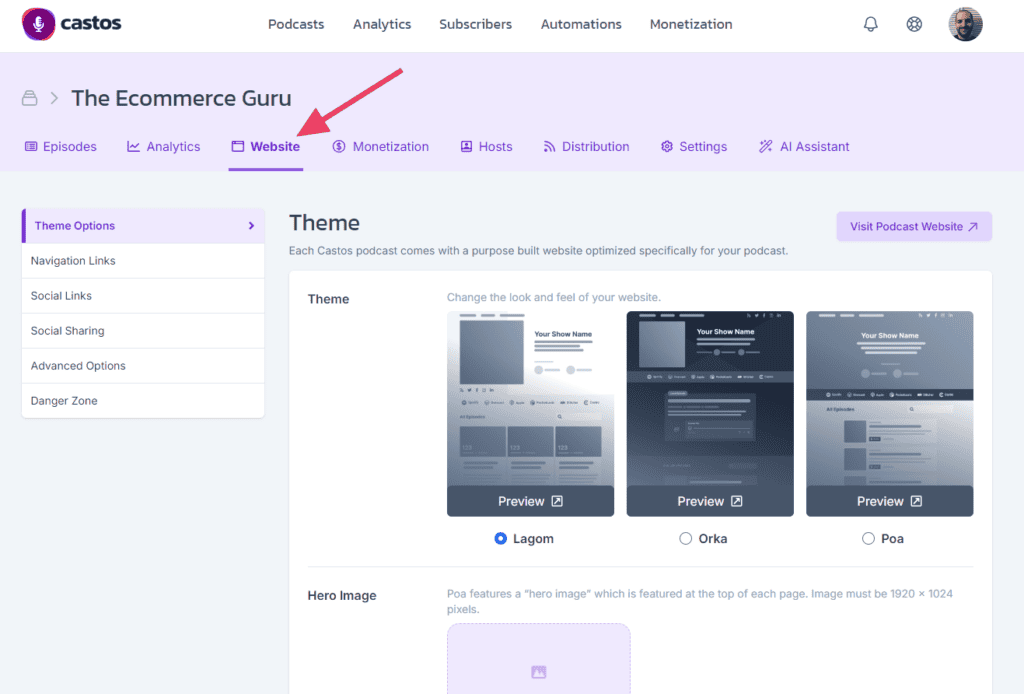
Once live, it’s the perfect place to direct people to subscribe to the show on their preferred podcast app or listen to any episode on the spot.
Let’s look at some ways you can customize your Castos website.
Action
As you set up your Castos account, you can customize the look and feel of the podcast’s website to fit your brand during your 14-day free trial.
If you want to see a Castos podcast webpage in action, check out our own podcast’s page. Audience is a show that offers an unfiltered look at how to grow a podcast.
Multiple Subscribe Links
The website helps your listeners find your show on their preferred listening app. It includes a subscription link to everywhere your podcast exists. Now your audience members who prefer Spotify can directly subscribe on that platform while others can head straight to Pocket Casts.
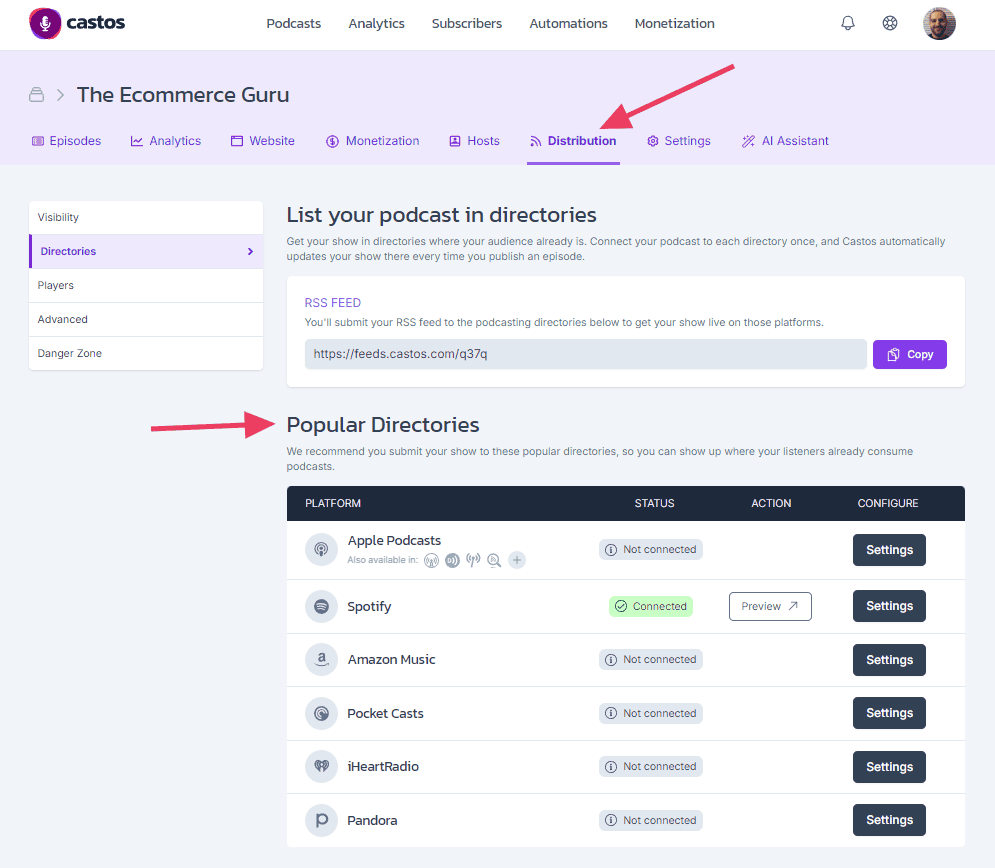
Customize the Color Scheme
A podcast webpage is an extension of your brand, so it’s best to keep everything consistent. Inside the Castos dashboard, you can manually choose the primary color scheme. This will update the page’s subscribe button, background accents, and underline details.

Update the URL
You don’t want your listeners to have to remember a completely random URL to find your webpage. Instead, update it to relate to the podcast. Many users use their podcast’s name to keep things simple.
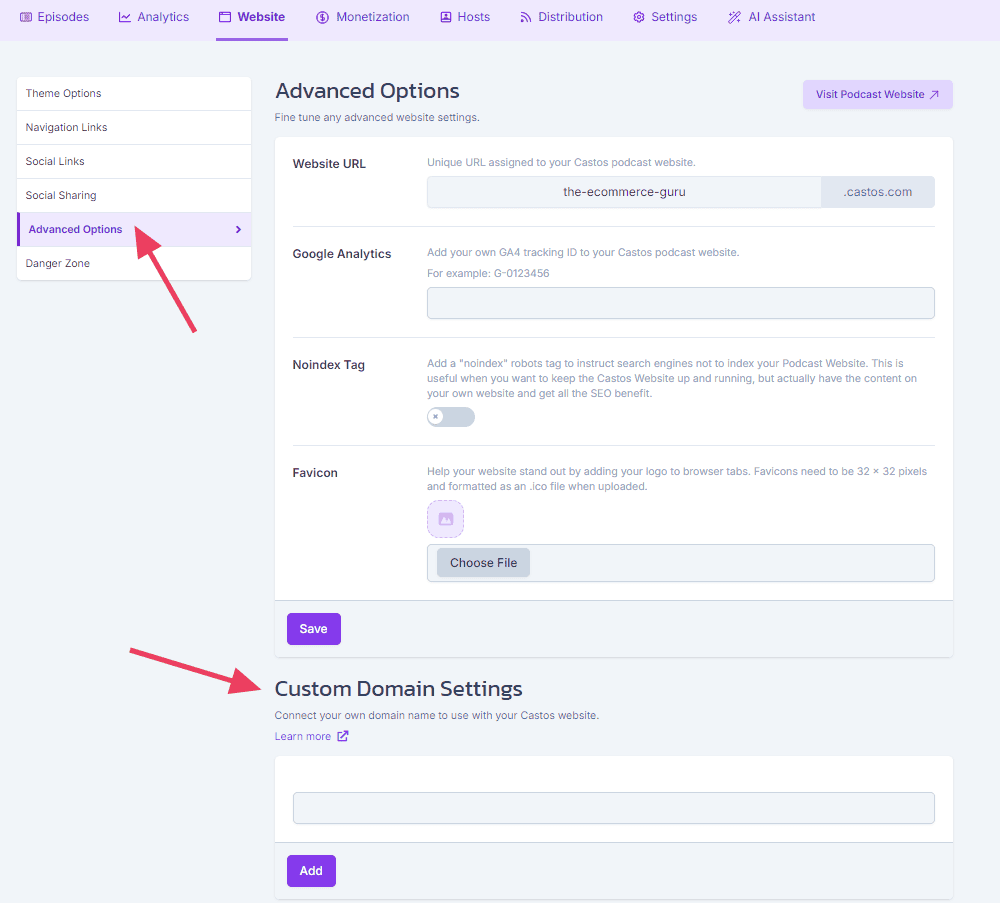
Social Media Links
Add each social media platform, including Instagram, Facebook, Twitter, and YouTube to your site. Each platform’s icon appears at the top of the page so your listeners can easily follow you on multiple platforms.
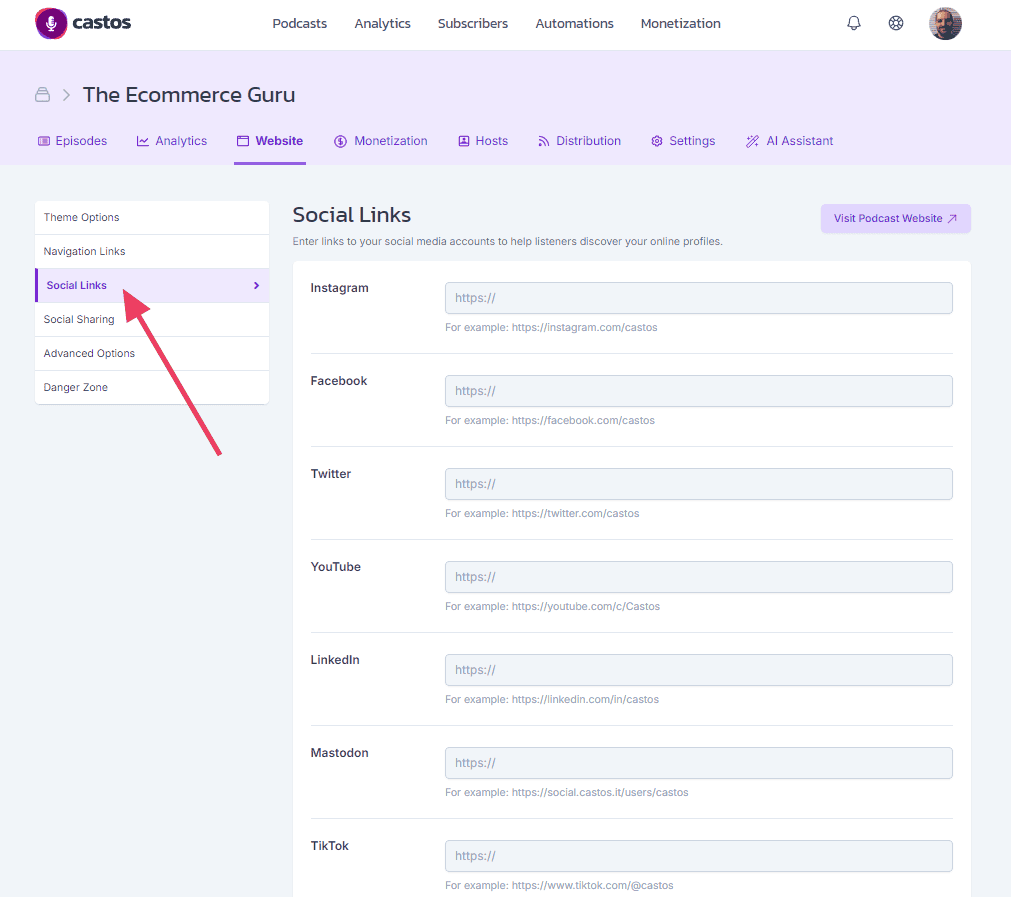
Podcast Website Best Practices
As you work through this six step guide to set up a podcast website, be sure to follow these best practices so your site really shines.
- Make it easy for people to listen: Put your newest episodes (including podcast players) on your home page and place your audio player at the top of posts. If your shows have a video element, put that here as well.
- Use legible fonts and colors: Make sure the text is easy to read and avoid putting text on images as search engines can’t read them lowering their SEO value.
- Make your subscribe links accessible: Put your links in the footer so they appear on every page and don’t forget to include every directory your show can be found.
- Make your pages easy to share: Configure your social links to appear on each new post so people can share episodes across their channels with a single click
- Put your elevator pitch front-and-center: Use clear language and be sure to include the pitch above the fold on your homepage.
- Help new listeners jump in: Show off your most popular episodes by prominently placing them on your site. This will introduce new visitors to listen to your best stuff first. The Memory Palace has a category called “Where Do I Start?”
Build Your Own Podcast Website Today
A professional podcast website is an important part of your brand. It’s a place where listeners can learn more about you and your show, and where they can read your show notes and transcripts.
If you follow the simple steps we’ve outlined above, you’ll create an attractive and functional podcast website in just a few hours. With a professional site promoting the show, you’ll start to reap the benefits and grow your listenership


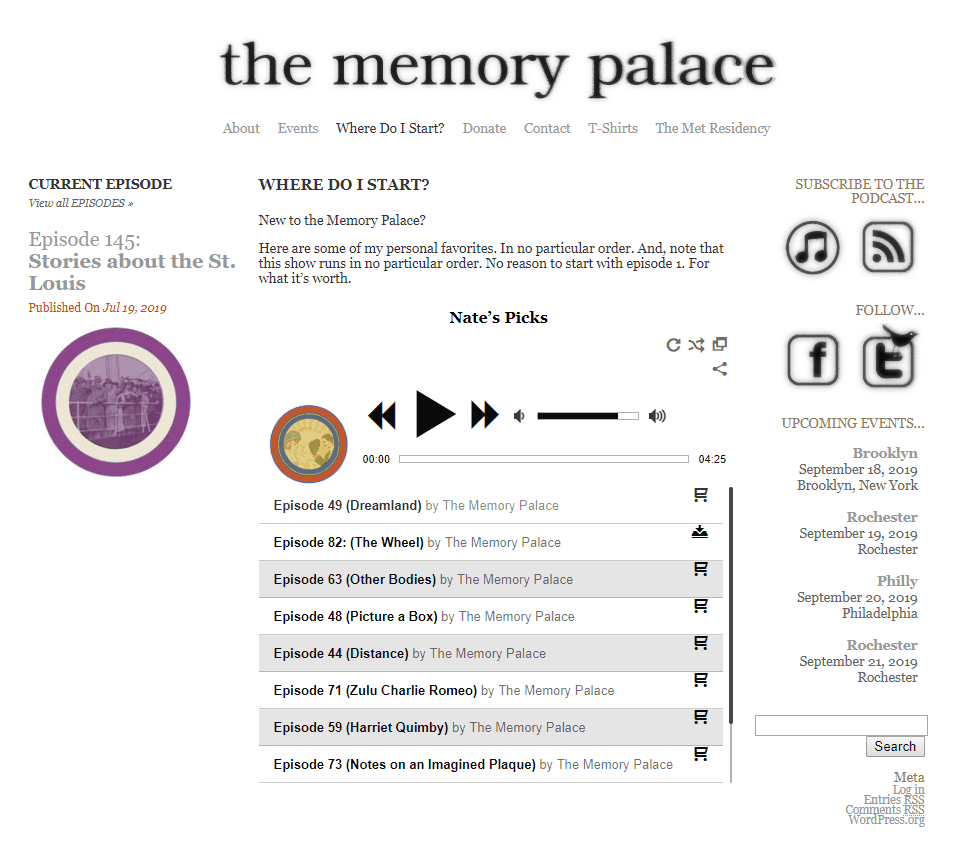

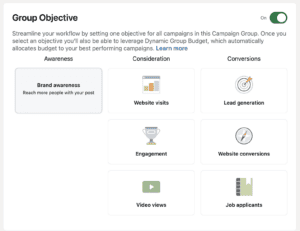
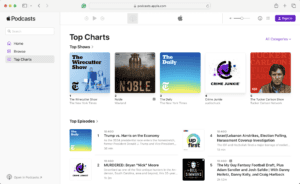
Comments are closed.